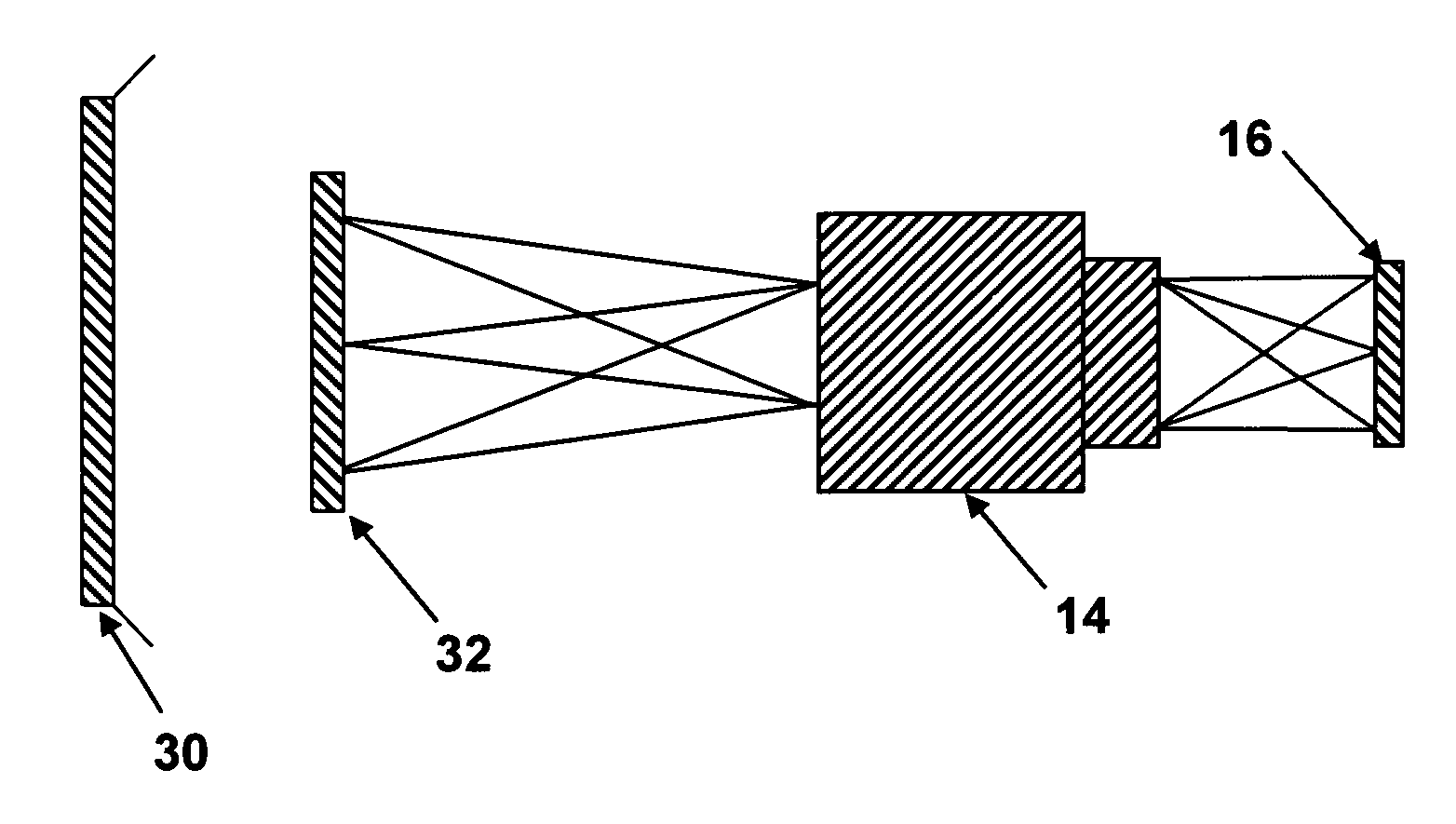Tilted edge for optical-transfer-function measurement
a technology of optical transfer function and tilting edge, which is applied in the direction of measurement devices, structural/machine measurement, instruments, etc., can solve the problems of data stitching challenges, aliasing of imaged signals, narrow detector field of view, etc., and achieves a quick and practical way of calculation
- Summary
- Abstract
- Description
- Claims
- Application Information
AI Technical Summary
Benefits of technology
Problems solved by technology
Method used
Image
Examples
Embodiment Construction
[0030]The inventive aspect of this disclosure lies in the idea of using multiple targets to measure the field of the optics being tested and tilting the edge of conventional edge-scan targets with respect to the edge-response detection line. As defined in the art, this is the line along which the contrast in the image created by the edge in the target is measured across the field of the optics being tested (or across a sub-region of the field, as the case may be). In prior-art apparatus, the edge is kept in perpendicular position with respect to the direction of the detection line. Instead, the present invention introduces an arbitrary tilt which may vary greatly over an optimal angle that depends of the geometry of the system, pixel size and shape, and similar specifications.
[0031]The tilt of the invention produces a skewed measurement and a corresponding magnification factor that can be described in terms of two analogous observations. First, the tilt of the edge effectively stret...
PUM
 Login to View More
Login to View More Abstract
Description
Claims
Application Information
 Login to View More
Login to View More - R&D
- Intellectual Property
- Life Sciences
- Materials
- Tech Scout
- Unparalleled Data Quality
- Higher Quality Content
- 60% Fewer Hallucinations
Browse by: Latest US Patents, China's latest patents, Technical Efficacy Thesaurus, Application Domain, Technology Topic, Popular Technical Reports.
© 2025 PatSnap. All rights reserved.Legal|Privacy policy|Modern Slavery Act Transparency Statement|Sitemap|About US| Contact US: help@patsnap.com



